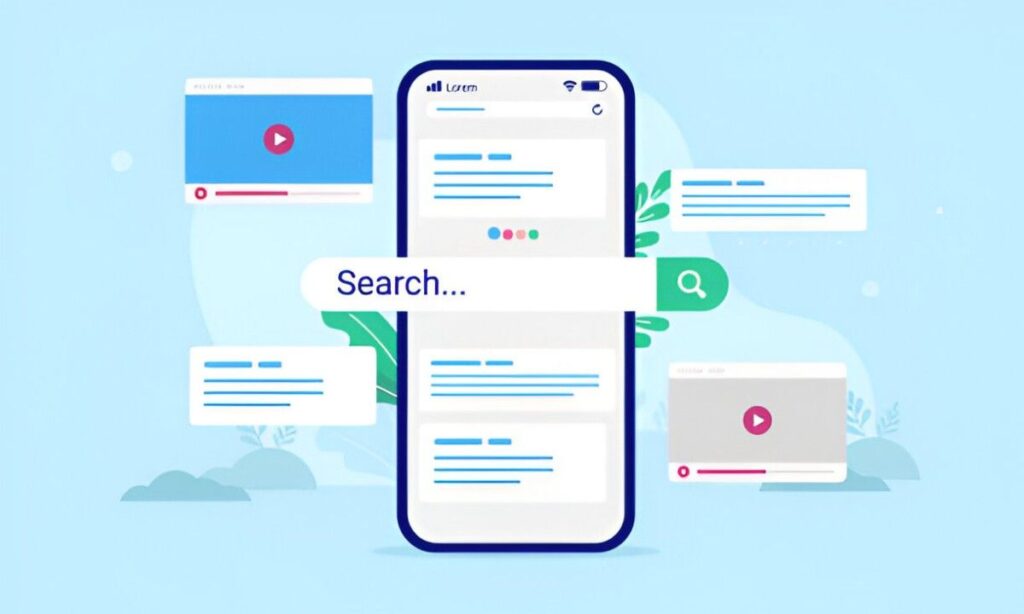Search Engine Optimization (SEO) plays a crucial role in enhancing your website’s visibility, driving organic traffic, and ensuring sustainable growth in the digital ecosystem. Both on-site and off-site SEO tasks are fundamental to a well-rounded strategy. In this comprehensive guide, we’ll delve into a 2000+ word detailed checklist covering both realms to help you create an optimized and authoritative website.
On-Site SEO Checklist
On-Site SEO focuses on optimizing elements within your website to achieve higher search engine ranks and gain relevant traffic. Let’s break down the essential components.
Tools and Plugins
1. Setup Google Search Console
- Purpose: Track indexing, visibility, and site performance.
- Action: Connect your site to Google Search Console, submit your sitemap, and regularly review reports for insights into crawling and indexation issues.
2. Install Bing Webmaster Tools
- Purpose: Reach Bing users and enhance visibility.
- Action: Verify your site with Bing Webmaster Tools, submit the sitemap, and leverage analytics offered to monitor performance and technical issues.
3. Setup Google Analytics
- Purpose: Measure traffic and user behavior comprehensively.
- Action: Set up Google Analytics, link it with your Search Console account, and utilize reports to analyze traffic sources, behavior, and conversions.
4. Install Yoast SEO (WordPress Users Only)
- Purpose: Optimize content and meta tags for search engines.
- Action: Install and configure Yoast SEO plugin, follow recommendations for each page/post, and ensure meta descriptions, titles, and readability guidelines are met.
Keywords
5. Discover Long Tail Keywords With Google Suggest
- Purpose: Capture specific, intent-driven searches.
- Action: Utilize Google’s autocomplete feature to find long-tail keywords that users might be searching for and incorporate them into your content strategy.
6. Find Solid Keywords in The Google Keyword Planner
- Purpose: Identify high-volume, relevant keywords.
- Action: Use Google Keyword Planner to discover keywords with a good balance of search volume and competition, and incorporate them strategically into your site.
Website Optimization
7. Include Your Keyword in Your URL
- Purpose: Enhance relevance and click-through rates.
- Action: Ensure URLs are clean and include target keywords to improve the clarity and SEO-friendliness of your web pages.
8. Use Short URLs
- Purpose: Preferred by users and search engines.
- Action: Structure URLs to be concise and descriptive, avoiding unnecessary characters and parameters.
9. Front-Load Your Keyword in Your Title Tag
- Purpose: Improve ranking emphasis.
- Action: Place keywords at the beginning of title tags to ensure better visibility and relevancy for search engines.
10. Embed Title Tag Modifiers
- Purpose: Increase click-through rates (CTR).
- Action: Use modifiers like “best,” “guide,” “review,” etc., to create intriguing and relevant titles that attract clicks.
11. Use Your Keyword Once in The First 150 Words
- Purpose: Highlight content’s focus early on.
- Action: Incorporate the main keyword naturally within the first 150 words of your content to reinforce relevancy.
12. Use Your Keyword in H1, H2, or H3 Tags
- Purpose: Organize content and highlight key points.
- Action: Ensure headers contain keywords, helping search engines understand the structure and focus of your content.
Image Optimization
13. Optimize Images
- Purpose: Enhance page load speed and relevancy.
- Action: Use descriptive file names and alt text for images, compress files to reduce load times, and utilize responsive images techniques.
14. Use Multimedia
- Purpose: Improve engagement and user experience.
- Action: Incorporate various multimedia elements such as images, charts, infographics, videos, and interactive content like polls and quizzes to make content more engaging and shareable.
Content Optimization
15. Use Synonyms and LSI Keywords
- Purpose: Enhance semantic relevance.
- Action: Integrate synonyms and Latent Semantic Indexing (LSI) keywords to cover a broader topic spectrum and aid in context understanding by search engines.
16. Use External Links
- Purpose: Build credibility and context.
- Action: Link to authoritative and relevant external sources to support your content and increase trustworthiness.
17. Use Internal Links
- Purpose: Improve navigation and distribute link equity.
- Action: Strategically link to other pages within your site to guide users, enhance the user experience, and help search engines crawl your site more effectively.
Technical SEO
18. Identify Crawl Errors
- Purpose: Ensure search engines can access your pages.
- Action: Regularly check Google Search Console for crawl errors and resolve issues promptly to ensure all crucial pages are indexed.
19. Find Out How Google Views Your Page using Google Search Console’s “Inspect URL” feature
- Purpose: Verify how Google interprets your content.
- Action: Use the “Inspect URL” feature to check for rendering issues, indexing status, and enhancements needed to optimize your pages for search engines.
20. Make Sure Your Site is Mobile-Friendly
- Purpose: Improve user experience and rankings.
- Action: Test your site’s mobile-friendliness using Google’s Mobile-Friendly Test tool and ensure a responsive design that adapts to different screen sizes.
21. Fix Broken Links
- Purpose: Enhance the user experience and prevent SEO penalties.
- Action: Use tools like Screaming Frog or Ahrefs to detect and correct broken links that could negatively affect user experience and SEO.
22. Secure Your Site With HTTPS
- Purpose: Enhance security and trustworthiness.
- Action: Obtain and install an SSL certificate to switch your site to HTTPS, ensuring data security for your users and gaining a small ranking boost from search engines.
23. Check Your Site’s Loading Speed
- Purpose: Improve user experience and rankings.
- Action: Use tools like Google PageSpeed Insights to assess and enhance your site’s loading speed by optimizing images, leveraging browser caching, and minimizing code.
Off-Site SEO Checklist
Off-Site SEO focuses on activities performed outside your website to improve its authority, relevance, and visibility. Let’s explore these vital components in detail.
Conceptual Framework
1. Develop a Well-Diversified Link Profile
- Purpose: Balance authority and reduce penalties.
- Action: Build a mix of high and low authority links from various sources to create a robust and natural-looking link profile.
2. Conduct Competitor Research
- Purpose: Identify opportunities and strategies.
- Action: Analyze competitors’ backlinks using tools like Ahrefs or SEMrush to uncover potential link-building opportunities and understand their SEO tactics.
3. Manage Do-Follow vs No-Follow Links
- Purpose: Maintain a natural link profile.
- Action: Ensure a healthy balance between do-follow links (which pass SEO value) and no-follow links (which drive traffic and diversity).
Content Marketing (Very High Value)
4. Guest Posting
- Purpose: Gain exposure and backlinks.
- Action: Write high-quality articles for relevant blogs in your niche, with contextual backlinks to your site, providing value to their audience.
5. Blogger Outreach
- Purpose: Collaborate for backlinks and exposure.
- Action: Reach out to bloggers and influencers in your industry, offering to provide content or review products, in exchange for a backlink.
6. Press Release
- Purpose: Generate buzz and authoritative links.
- Action: Create and distribute press releases about significant company updates or product launches to authoritative news websites and platforms.
7. Influencer Marketing
- Purpose: Leverage influencers to amplify reach.
- Action: Partner with influencers to promote your products or content, gaining exposure and potential backlinks from their audience.
Commenting (High Value)
8. Blog Commenting
- Purpose: Engage and build relationships.
- Action: Leave valuable comments on relevant blogs and forums, establishing connections and potentially gaining no-follow backlinks that drive traffic.
9. Forums Posting
- Purpose: Participate in niche communities.
- Action: Contribute to discussions on relevant forums, sharing expertise and linking back to your website when appropriate.
10. Review Writing: Google My Business (GMB)
- Purpose: Boost local SEO.
- Action: Collect and manage positive reviews on your Google My Business profile to enhance local visibility and credibility.
11. Question and Answer (Q&A)
- Purpose: Provide value and gain traffic.
- Action: Answer questions on platforms like Quora or Stack Exchange, linking back to your site in relevant and helpful contexts.
Multimedia (Medium Value)
12. Local Citation
- Purpose: Enhance local relevance.
- Action: Ensure consistent NAP (Name, Address, Phone) information across local directories and business listings to bolster local SEO.
13. Document Sharing
- Purpose: Distribute content widely.
- Action: Share informative documents (images, videos, infographics, PDFs, PPTs) on various document-sharing platforms, driving traffic and links back to your site.
13. Document Sharing (continued)
- Purpose: Distribute content widely.
- Action: Share informative documents (images, videos, infographics, PDFs, PPTs) on platforms like SlideShare, Issuu, and YouTube to drive traffic and backlinks to your site.
14. Brand Mentions
- Purpose: Gain credibility through citations.
- Action: Monitor and encourage relevant brand mentions on blogs, forums, and social media. Reach out to webmasters to turn unlinked mentions into backlinks where possible.
Social (Medium Value)
15. Social Media Engagement
- Purpose: Increase visibility and traffic.
- Action: Actively participate in social media platforms, sharing valuable content, engaging with your audience, and driving traffic to your site.
16. Web 2.0
- Purpose: Create additional content channels.
- Action: Use Web 2.0 sites like Medium, Blogger, and Tumblr to publish additional content, link back to your primary site, and build authority.
Link Building (Low Value)
17. Social Bookmarking
- Purpose: Increase visibility and inbound links.
- Action: Share your content on social bookmarking sites like Reddit, StumbleUpon, and Digg to drive traffic and gain backlinks.
18. Classified Listing
- Purpose: Gain exposure and links.
- Action: Post your products or services on classified ad sites such as Craigslist and Gumtree to increase visibility and acquire links.
Concluding Remarks
The SEO landscape is dynamic, requiring continuous adaptation and diligence. This comprehensive SEO checklist offers a strategic framework for both on-site and off-site optimization to enhance your website’s visibility, authority, and performance in search engine results.
Implementation and Monitoring: For sustained SEO success, it’s essential to implement this checklist methodically and continually monitor progress. Utilize analytics and webmaster tools to track the impact of your efforts, making necessary adjustments in your strategy.
Adaptation and Innovation: SEO is not a one-time task but an ongoing process. Stay updated with the latest SEO trends, algorithm changes, and best practices. Regularly update your content, engage with your audience, and explore new opportunities to maintain and improve your search engine rankings.
By following this ultimate on-site and off-site SEO checklist, you can systematically improve your website’s SEO health, drive more organic traffic, and achieve long-term digital success.

